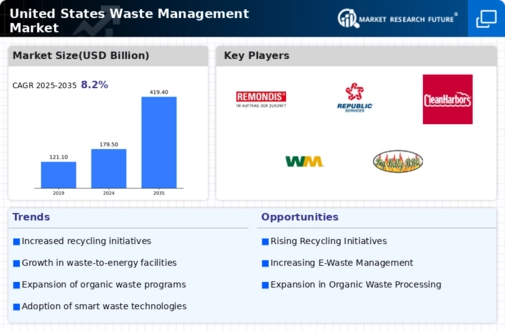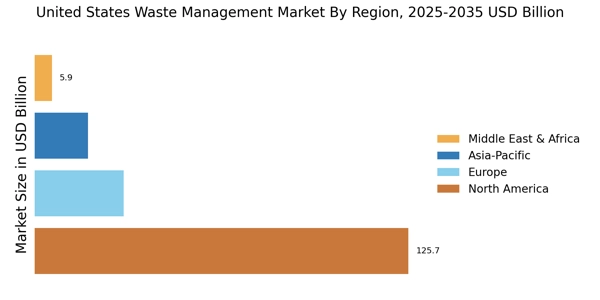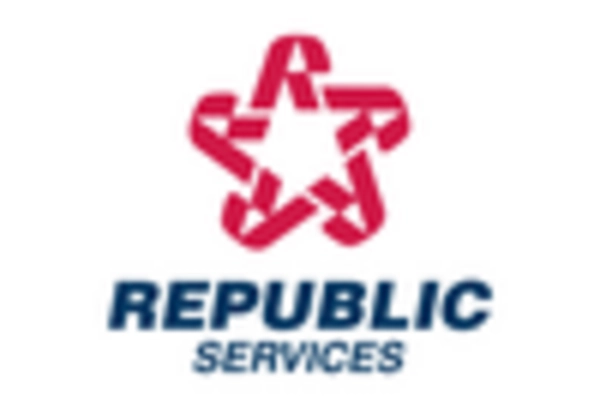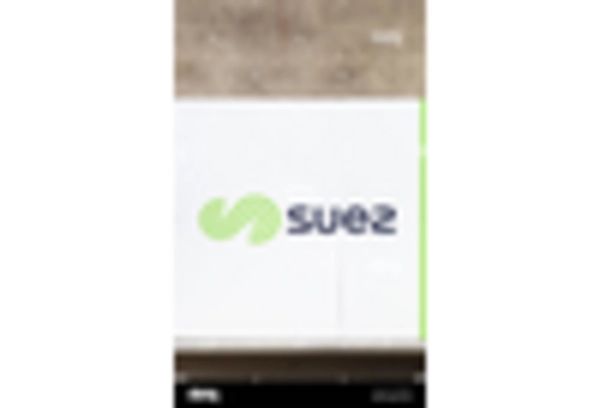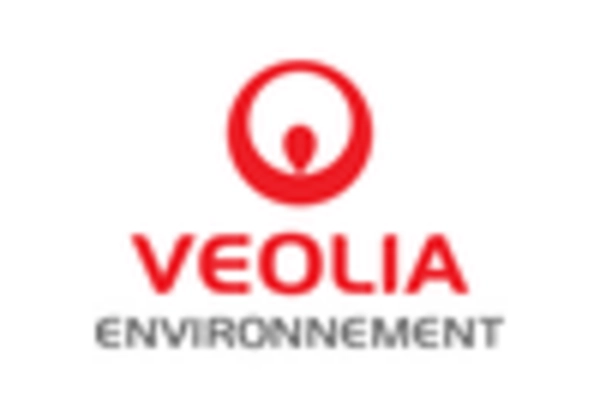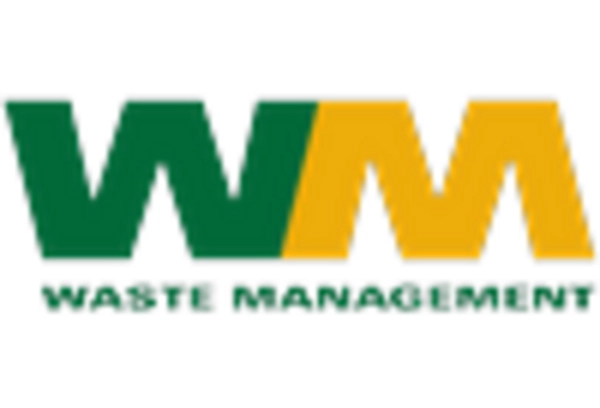Economic Growth and Industrial Expansion
Economic growth and industrial expansion are pivotal drivers of the United States Waste Management Market. As the economy continues to recover and expand, industrial activities generate increased waste, necessitating effective waste management solutions. The manufacturing sector, in particular, is a significant contributor to waste generation, with estimates indicating that it accounts for nearly 30% of total waste produced. This growth in industrial output compels waste management companies to enhance their services and infrastructure to handle the rising waste volumes. Furthermore, economic incentives for recycling and waste reduction initiatives are likely to bolster market growth, as businesses seek to optimize waste management costs while adhering to environmental regulations.
Growing Urbanization and Population Density
Urbanization continues to reshape the United States Waste Management Market, as increasing population density in urban areas generates higher volumes of waste. The U.S. Census Bureau projects that by 2030, over 80% of the population will reside in urban settings, leading to a surge in waste generation. This demographic shift necessitates enhanced waste management strategies to accommodate the rising demand for efficient waste collection and disposal services. Consequently, municipalities are investing in infrastructure improvements and innovative waste management solutions to address the challenges posed by urban waste. The need for effective waste management in densely populated areas is likely to drive market growth and innovation.
Technological Innovations in Waste Management
Technological advancements are revolutionizing the United States Waste Management Market, offering new solutions for waste collection, sorting, and recycling. Innovations such as automated waste sorting systems and smart waste bins equipped with sensors are enhancing operational efficiency and reducing labor costs. The adoption of data analytics and artificial intelligence in waste management processes allows for better forecasting and resource allocation. As of 2023, investments in waste management technology have surged, with the market projected to grow at a compound annual growth rate of 5.5% through 2030. These technological innovations not only streamline operations but also contribute to more sustainable waste management practices.
Regulatory Compliance and Environmental Standards
The United States Waste Management Market is increasingly influenced by stringent regulatory compliance and environmental standards. Federal and state regulations mandate proper waste disposal and recycling practices, compelling waste management companies to adopt sustainable methods. The Environmental Protection Agency (EPA) has set ambitious targets for waste reduction, which necessitates innovative solutions in waste processing. As of 2023, approximately 35% of municipal solid waste was recycled, indicating a growing trend towards compliance with recycling mandates. This regulatory landscape not only drives operational changes but also fosters investment in advanced waste management technologies, thereby enhancing the overall efficiency of the industry.
Increased Awareness of Environmental Sustainability
The United States Waste Management Market is experiencing a paradigm shift due to heightened awareness of environmental sustainability among consumers and businesses. As public consciousness regarding waste management issues grows, there is a marked increase in demand for eco-friendly waste disposal and recycling services. Surveys indicate that over 70% of consumers prefer companies that demonstrate a commitment to sustainability. This trend is prompting waste management firms to adopt greener practices, such as composting and waste-to-energy technologies. The integration of sustainable practices not only meets consumer expectations but also aligns with corporate social responsibility goals, thereby enhancing brand reputation and market competitiveness.


